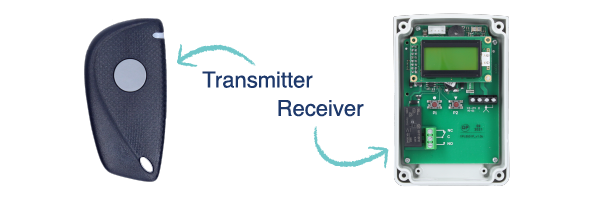What is radio transmission?
Radio transmission sends information from one place to another through the air. The information is sent on radio waves. As a form of wireless communication, radio transmission can prove useful in situations where wiring is impractical.
Most people are familiar with radio transmission in the context of radio and television broadcasting. This wireless communication technology is also what powers walkie-talkies. It encodes the sound of a person’s voice onto the radio waves and sends it through the air to the other walkie-talkie. The other walkie-talkie decodes it into what you hear: the sound of the person’s speech.
How does radio transmission work?
What do you need for a radio transmission solution?
Any radio transmission solution, from small to very large, consists of two primary components. First, there’s the transmitter. This component generates the radio signal and sends it out into the air. Then there’s the receiver. This component picks up the signal from the air and converts it back into a usable format.

What are radio waves?
Radio waves are all around us, all the time. Human beings can’t see, hear, or feel them. Technically, they are a type of wave on the electro-magnetic spectrum. The electro-magnetic radiation spectrum is huge. It also includes microwaves, infrared waves, visible light, and x-rays. Radio waves cover the part of the spectrum with the longest wavelength. At the other extreme of the spectrum, gamma rays have the shortest wavelength.

What are continuous sine waves?
When radio transmission technology was in its infancy in the early 20th Century, transmitters would send out signals that spanned the entire spectrum of available frequencies. This didn’t cause problems at the beginning when there was limited use of the technology. However, as radio transmission became more popular, it wasn’t sustainable.
To combat this issue, most modern radio transmitters use continuous sine waves. A sine wave is a basic signal and the most common form of electrical or electronic wave. It contains only the single frequency of the signal, and nothing else. A sine wave oscillates smoothly and equally either side of a central value. The ‘continuous’ means that the wave has a constant amplitude.
How is the message encoded onto sine waves?
The job of the transmitter is to take the data in the message to be transmitted and encode it onto sine waves ready to be sent out. The method of encoding the message onto the sine waves is called modulation. Whether the message consists of a string of written text, a recording of a voice, or video images, it’s all encoded in the same way.

What are the methods of modulation?
Modulation is the process of encoding a message onto sine waves, ready to be transmitted via radio waves. There are three main methods of encoding the data.
Pulse modulation. This method works in a similar way to Morse code. The signal turns on and off again at particular intervals in order to transmit the message.
Amplitude modulation. Amplitude is the distance between the highest and lowest points of the waves and the centre line. Modulating the amplitude means encoding the message by varying the height of the sine waves. The centre line is usually at zero Volts, but can have other values as well. Increasing the voltage means the amplitude above and below the 0V line also increases.
Frequency modulation. Frequency is how long it takes for the sine wave to oscillate from its highest amplitude to its lowest amplitude. Modulating using this method involves changing the frequency in order to encode the message. Because of its resistance to static interference, this is the most common method of modulation.

One full oscillation of a wave from the top of its highest peak to the bottom of its lowest trough is one cycle. We measure the frequency of the wave in cycles per second. In other words, how many times it oscillates from top to bottom in the space of a second. You have probably come across frequency on radio stations. BBC Radio 1, for example, broadcasts on the frequency band of 97-99 FM. 99FM means that the radio waves that are delivering the sound data to your device are oscillating at a rate of 99,000,000 cycles per second.
How are transmitted messages decoded?
Once the data has been encoded onto the sine waves by the transmitter and sent out into the air, it needs to be picked up and decoded. A receiver that is tuned to the same specification as the transmitter (and located within range of the signal) will pick up the signal. That means the frequencies of both components must match, and they must both use the same type of modulation. If either factor is different, the message will not be successfully transmitted.
The same method that is used to encode the message is used in reverse to decode it. The receiver then converts the decoded message into a usable format. That might be a trigger for a relay, a broadcast video, or a string of text.
Radio transmission solutions by CDVI
Radio transmission is a hugely versatile solution. For security and access control products, wireless communication solves a whole host of common challenges. From making an exit button wireless in a listed building to triggering automatic gates, this technology is an unsung hero. Find out more today about how radio transmission could transform your projects!
